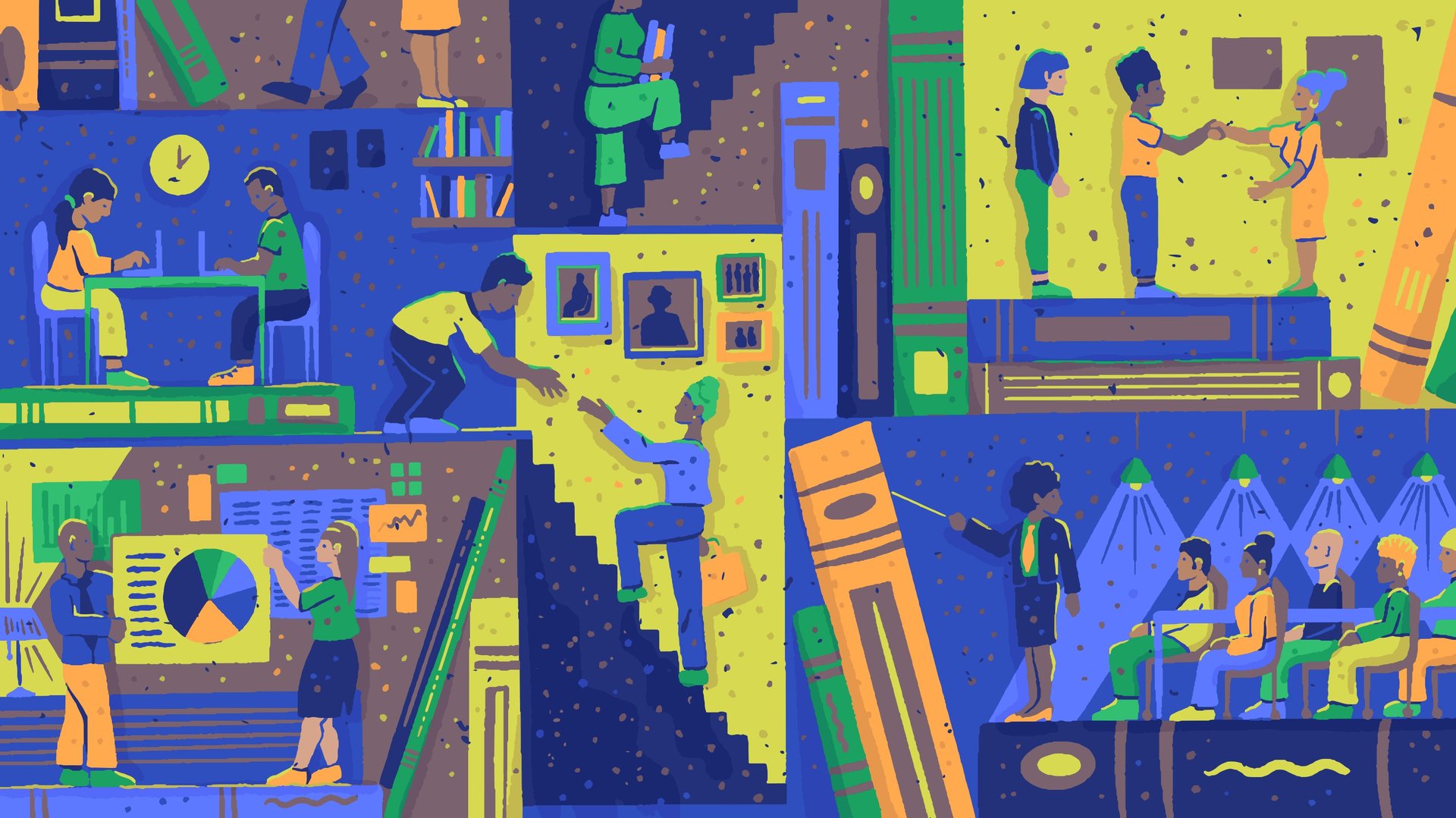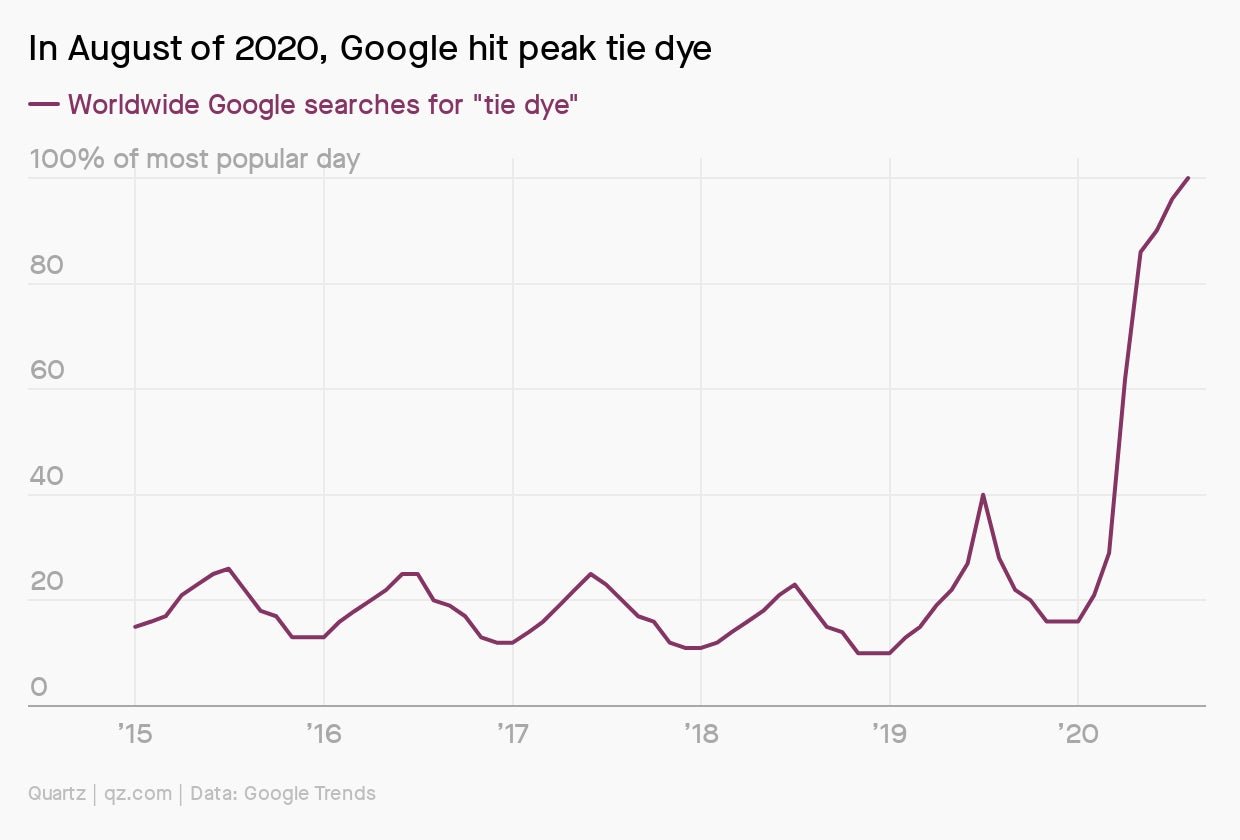Pompeo back in Europe, Belarus clashes, peak tie-dye
Good morning, Quartz readers!

Good morning, Quartz readers!
Here’s what you need to know
Mike Pompeo is in Europe. On his visit to Austria, the Czech Republic, Poland, and Slovenia, the US secretary of state will discuss the reduction of American troop numbers in Germany, and plans to send forces to Poland. He’ll also lobby against the use of Chinese equipment in 5G networks.
Authorities shut down Minsk. The government shut down subways and sealed roads, while police fired tear gas and rubber bullets at demonstrators who barricaded streets. At least one protester has died, and about 3,000 have been detained in protests across Belarus against a poll widely seen as rigged to give Alexander Lukashenko a sixth term.
SoftBank rebounds. The Japanese group, which is behind a $100 billion fund known for its splashy tech investments, is expected to report a profit for the three months to June, after recording a nearly $18 billion loss in the last financial year as the value of companies like WeWork and Uber tumbled.
Lebanon was warned in July to secure explosive chemicals. Security officials told prime minister Hassan Diab two weeks before the deadly Beirut blast that ammonium nitrate stored unsafely at the port could destroy the city. After days of protests, the government resigned en masse yesterday.
TikTok’s Trump lawsuit could arrive today. The subsidiary of China’s ByteDance plans to file a challenge to the US president’s executive order banning the video app, possibly as soon as today. TikTok also announced the first recipients of its $1 billion fund for US-based creators yesterday.
Prime real estate
Amazon has reportedly been in talks with Simon Property Group, the largest mall owner in the US, about turning some of the spaces occupied by its anchor department stores—including bankrupt big boxes JC Penney and Sears—into distribution warehouses.
Would it bother you if part of your disused local mall was turned into an Amazon fulfillment center? (Before you answer, you might want to check out the pros and cons.)
Tell us how you feel:
Charting peak tie dye
Twisting fabric and dunking it in dye has been in and out of fashion for thousands of years. We don’t have data on Indian bandhani output from 3000 BC or shibori sales in 8th-century Japan, but we can pull Google searches for “tie dye” for the past few years.
People without a lot to do have turned to both churning out the patterns themselves—an Etsy representative says searches for DIY tie-dye kits have nearly tripled in volume compared to the same time last year—and buying clothing pre-dyed.
Halvsies. A poll by Adecco Group of 1,000 office workers in eight countries found that most people wanted to spend 51% of their time in the office, and 49% remote.
Getting stuff done. Deutsche Bank found in a July poll that 70% of people surveyed said they were more productive working from home.
Newbie nostalgia. An April 2020 survey conducted by software company Smartsheet found that the youngest workers were struggling the most with working from home, despite being the most tech-savvy.
Not all bad. Around 37% of people surveyed in July by Qualtrics and Quartz thought culture at their workplace had improved since the beginning of the Covid-19 pandemic.
Read more about how Covid-19 is forcing companies across the world to discover what “the office” means to them in our latest field guide.
Already a member? Enjoy all our field guides with our thanks. Ready to support quality journalism and go about your day paywall-free? Become a Quartz member, now at 40% off your first year.
Join us for a free workshop

Whether its in-person or virtual, how can your workplace become more inclusive? The journey may not always be easy, but we are here to point you in the direction of change, no matter where you are in the company org chart.
Register to join us on Aug. 13th from 11-12pm EDT for our second workshop on how to build an antiracist company. In this free virtual event, our panel will take more of your questions and offer advice.
We asked why rapid testing is elusive in the US
Why is the US so far behind on rapid testing for Covid-19?
OK, we’ll be honest. You didn’t ask that, but Quartz special projects editor Alex Ossola did, and then found out the answer. Despite having the highest infection rate in the world, the US has a testing rate of about 12.5 tests per confirmed case, far lower than many other countries hit hard by the virus. Americans are still waiting up to two weeks for their results, too late for them to be useful, as the symptomless infected walk among us, rendering questionnaire and temperature screening methods moot.
Fortunately, quicker tests are on their way. The NIH’s Rapid Acceleration of Diagnostics (RADx) initiative seeks to speed up the development of tests. In April, Congress allocated $1.5 billion towards the program; last week, RADx announced the seven tests that passed the preliminary round of vetting and will now be produced en masse. They all work differently, and none of them are perfect, but increased testing could lead to some degree of normalcy within bubbles and possibly cheaper tests for all.
Surprising discoveries
Mauritians are shaving their heads to keep an oil spill at bay. Determined residents have woven floating barriers from their own hair to contain the catastrophic spill.
Time is a flat circle. A new theory of an endless “cyclic universe” sets itself up against the Big Bang theory of creation.
An Indian food delivery company will offer “period leave.” Zomato’s female employees can take up to 10 days a year under the new category of time off.
Pet parental leave is also a perk. Stipends, dog Zoom meetings, and even time off to welcome new puppies are some of corporate America’s latest employee benefits.
Facial recognition wasn’t Apple’s timeliest idea. New York’s transit authority formally asked Apple to release a way to unlock phones that didn’t require riders to remove masks.
Our best wishes for a productive day. Please send any news, comments, bug repellants, and wads of human hair to [email protected]. Get the most out of Quartz by downloading our app on iOS and becoming a member. Today’s Daily Brief was brought to you by Tripti Lahiri, Isabella Steger, and Alexandra Ossola.
